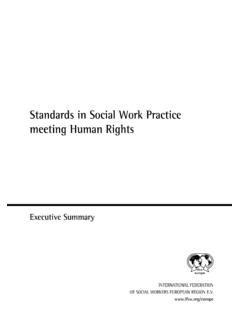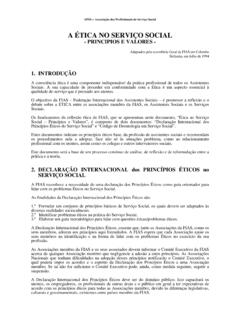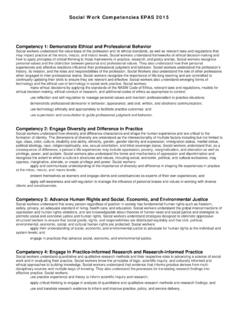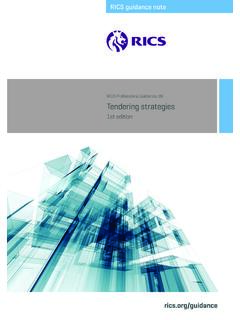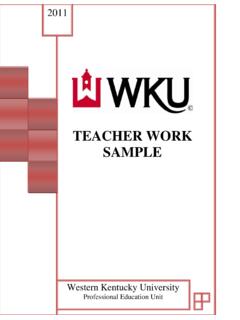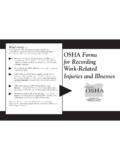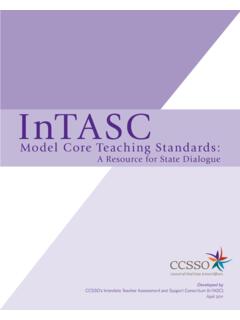Transcription of Social Work and the Rights of the Child
1 International Federation of Social WorkersSocial work and theRights of the ChildA ProfessionalTraining Manualon the UN ConventionFront-page photo: UNICEF/DO179-0001/RotnerPrint: Fischer AG f r Data und Print, CH-3110 M nsingen, SwitzerlandIFSW Manual: Social work and the Rights of the Child1 Social work AND THE Rights OF THE Child A professional Training Manual on the UN Convention1 INTRODUCTION42 BACKGROUND53 A COMMITMENT TO CHILDREN S HUMAN Rights 74 MAKING SENSE OF THE CONVENTION ON THE Rights OF THE CHILD10I GENERAL MEASURES OF IMPLEMENTATION11(Articles 4, 42 and 44)AComprehensive review of legislation, policy and practice11 BPermanent mechanisms to ensure implementation 11 CBudgetary analysis and allocation of necessary resources11 DPromoting the Convention to professionals and to the public11 EThe role of Social workers in promoting full compliance with the Convention11II DEFINITION OF THE CHILD15(Article 1)
2 Variations in national legislation, minimum ages and the application of the Convention in relation to: A Civil Law16B Criminal Law16 CConstitutional Law17D Employment Law17E Rights to know biological origins19F Access to education19G Sexual consent and marriage20H Voluntary and forced conscription into the armed forces21I Religious freedom21J Use of alcohol and other controlled substances22 III GENERAL PRINCIPLES24A Non-discrimination (art 2)24 BBest interests of the Child (art 3)25 CRespect for the views of the Child (art 12) 29 IVSURVIVAL AND DEVELOPMENT30(Article 6)VBASIC HEALTH AND WELFARE33(Articles 6, 18 para 3, 23, 24, 26 and 27 paras 1-3)AHealth and health services (art 24)33B Social security and Child care services and facilities (articles 26 and 3418 para.)
3 3)C Standard of living (art 27 para 1-3)35D Disabled children (art 23)35 VICIVIL Rights AND FREEDOMS36(Articles 7, 8, 13-17 and 37a)A Name and nationality (art 7)37B Preservation of identity (art 8)37C Freedom of expression (art 13)38D Freedom of thought, conscience and religion (art 14)38 EFreedom of association and peaceful assembly (art 15)38F Protection of privacy (art 16)39G Access to appropriate information (art 17)39H The right not to be subject to torture or other cruel, inhuman or degrading 40treatment or punishment (art 37a)VIIFAMILY ENVIRONMENT AND ALTERNATIVE CARE42(Articles 5, 18 para 1-2, 9-11, 19-21, 25, 27 para 4 and 39) A Parental guidance (art 5)42B Parental responsibilities (art 18 para 1-2)44C Separation from parents (art 9)45D Family reunification (art 10)47 EIllicit transfer and non-return (art 11)48F Recovery of maintenance for the Child (art 27 para 4)49G Children deprived of their family environment (art 20)49H Adoption (art 21)50I Periodic review of placement (art 25)51 JAbuse and neglect (art 19) including physical and psychological recovery and Social reintegration (art 39)52 VIII EDUCATION AND CULTURAL ACTIVITIES55(Articles 28, 29 and 31)A Education including vocational training and guidance (art 28)55 BSchool discipline in accordance with the Child s human dignity 57(art 28 para 2)C Aims of education (art 29)57D Leisure recreation and cultural activities (art 31)572 IFSW Manual.
4 Social work and the Rights of the ChildIXSPECIAL PROTECTION MEASURES58(Articles 20, 22, 38, 39, 40, 37 and 32-36)AChildren in situations of emergency58i)Refugee children (art 22)58ii)Children in armed conflicts (art 38) including physical and 60psychological recovery and Social integration (art 39)iii)Street children and children seeking a place of safety (art 20 and 39)62 BChildren involved with juvenile justice systems64i) The administration of juvenile justice (art 40)64ii) Children deprived of their liberty, including any form of detention,65imprisonment or placement in custodial settings (art 37b-d)iii) The sentencing of children with particular reference to the 66prohibition of capital punishment and life imprisonment (art 37a)iv) Physical and psychological recovery and Social integration of the 66child (art 39)CChildren in situations of exploitation including physical and psychological 67reco very and Social reintegrationi) Economic exploitation, including Child labour (art 32)67ii) Drug abuse (art 33)67iii) Sexual exploitation and sexual abuse (art 34)68iv) Sale, trafficking and abduction (art 35)70v) Other forms of exploitation (art 36)70D Children belonging to a minority or an indigenous group (art 30)725A MODEL CURRICULUM ON CHILDREN S Rights 73 APPENDICES1.
5 Convention on the Rights of the Child 772. Useful web sites and publications933. Ladder of Participation95 Photo Credits963 IFSW Manual: Social work and the Rights of the Child1 INTRODUCTION Social work and the Rights of the ChildA professional Training Manual on the UN ConventionThis manual provides stimulation and guidance to Social workers, Social work students and ed-ucators, as well as colleagues in related fields, who wish to live up to the high ideals of theUnited Nations Convention on the Rights of the Child and to implement them in their work withchildren. This convention is of singular importance to all Social workers. It is also the most sup-ported convention at the United Nations with 191 signatory states; only two members have yetto sign, namely the USA and Rights are at the heart of Social work and IFSW was pleased to take a leading role in cre-ating a successful Human Rights Training Manual for the Social work Profession and Schoolsof Social work , first published by the United Nations in 1992 and reprinted in 1994.
6 That man-ual has been an inspiration for many and is still used around the 1997 IFSW decided to publish a specialised manual to address the Convention on the Rightsof the Child . A small, international group of Social workers developed the manual, with the as-sistance of various member associations and others. This is yet another important milestone in the practical expression of international Social workand sincere thanks must go to all those involved in its production. Firstly to Ruth Stark, the con-venor, whose single-minded dedication to the task drew together the vast majority of the ma-terial. Secondly to Terry Bamford, Ellen Mouravieff-Apostol and Elis Envall, who provided tire-less support, comment and constructive criticism. To David Jones, Chair of the IFSW PolicyCommittee, for his assistance in bringing the final product to the table and to Carolyne Willow,an independent consultant on children s Rights and editor, who undertook the final independ-ent review and edit prior to material such as this is an expensive exercise and IFSW is grateful for the supportof the British Association of Social Workers, the Danish Association of Social Workers and theNorwegian Union of Social Educators and Social Workers.
7 We also gratefully acknowledge thesupport of UNICEF for making illustrations recommend the manual to you as an invaluable practical and relevant tool for anyone work -ing with children and families and of course for Social work students, practitioners and , January 2002 Imelda DoddsTom JohannesenIFSW PresidentIFSW Secretary General4 IFSW Manual: Social work and the Rights of the Child2 BACKGROUNDThe International Federation of Social Workers (IFSW) includes national organisations in 77countries representing 490,000 professional Social workers world-wide. It works collabora-tively with a wide range of international organisations. Through its code of ethics, its policystatements, its commitment to good practice and the work of the Human Rights Commission,the International Federation of Social Workers strives to promote the human Rights of all thepeople with whom Social workers work .
8 IFSW worked with the UN Centre for Human Rights to produce a training manual Human Rightsand Social Workin 1992 (reprinted 1994). The document examines UN human Rights instru-ments and identifies ways in which they illustrate and enhance the responsibilities of socialworkers. The manual has been widely used in schools of Social work and by Social work prac-titioners in their daily manual included reference to the Convention on the Rights of the Child , but more detailedwork was considered necessary to help Social workers to understand and apply the Conven-tion to their every day practice. The Convention covers all aspects of children s care and treat-ment and should therefore be the basis for all Social work intervention with aim of this manual is to ensure that children s human Rights , as set out in the Convention,are fully respected and implemented within the context of Social work .
9 The manual will be use-ful to trainee Social workers, as well as to Social workers and fellow professionals working withchildren. It will also be valuable to groups and organisations run by children and young people,as a self-advocacy support for the Convention on the Rights of the ChildThe United Nations unanimously adopted the Convention on 20 November 1989. It took tenyears to develop after Poland first proposed a special human Rights treaty for children at theend of the International Year of the Child in 1979. The Convention has now been ratified by 191 countries, a greater number than any other hu-man Rights treaty. The only two eligible countries that have not ratified the Convention are theUSA and Somalia. The act of ratification makes individual countries state parties.
10 Each stateparty is then required actively to promote and translate the Convention into all law, policy andpractice. Although the Convention has the status of international law, it is not legally bindingon public authorities or professionals unless state parties have incorporated its provisions intotheir domestic on the Rights of the ChildThe international treaty monitoring body for the implementation of the Convention is the Com-mittee on the Rights of the Child . The Committee comprises 18 adult experts on children srights from around the world. Each state party is required to complete a national report two years after ratification and there-after every five years. These reports are widely distributed and in some cases have been ac-5 IFSW Manual: Social work and the Rights of the Childcompanied by reports prepared by non-governmental organisations in the country, often in-cluding the views and experiences of children and young Committee has prepared guidelines for initial and periodic reports that state parties are ex-pected to follow when submitting their national reports.

